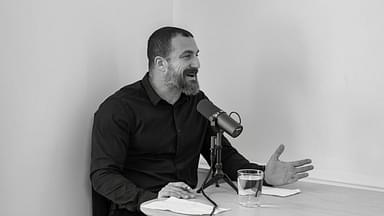Chronic pain has been one of the major concerns across the world. Stemming from various causes, Dr. Andrew Huberman aimed to understand the science behind pain management and the tools to do so. He teamed up with Stanford professor and anesthesiologist Dr. Sean Mackey to gain insights.
In his recent podcast, the neuroscientist discussed chronic pain and some holistic therapies to manage it. Dr. Mackey listed six major pillars that he knew were widely utilized to tackle chronic pain. Apart from medications and procedures, there were various ways to address the symptoms.
Chronic pain management can be divided into six broad categories: medications, nerve blockers or procedures, behavioral therapies, physical therapies, alternative medicines, and self-empowerment. All of these together, or in various combinations, help in battling chronic pain.
While medications are straightforward enough to understand, nerve blockers include trigger point injections, steroids, drug delivery implants, and so on. On the other hand, procedures like acupuncture, nutraceuticals, and so on fall under alternative therapies. Self-empowerment is a bit unorthodox for the chronic pain management segment.
“Self-empowerment or increasing your agency…here it’s about education, it’s about learning skills.”
It’s important to note how the methods range from something that may be rooted in ancient practices, like acupuncture. Others are more commonly practiced and considered modern medicine, such as nerve blockers and surgical procedures. However, Dr. Mackey strongly feels that all of these methods, if performed professionally, can give good results.
“Are they just like pain treats pain? Is that what it is about? But as you and I both know, unless it’s being performed incorrectly, acupuncture is not painful to receive.”
One has many approaches to help deal with chronic pain. However, depending on availability, trial and error, and expertise, one can choose their preferred technique.
What are the basic pain-management tools, according to Dr. Andrew Huberman?
In a previous segment of the podcast, Dr. Huberman listed three effective ways of dealing with pain, whether it’s chronic or temporary. The important measure to keep in mind is to understand if the pain is damaging in any way.
View this post on Instagram
The three tools that one could use are attentional distraction, mindfulness-based stress reduction, or cognitive-behavioral therapy. One needs distractions of some form, acceptance of the pain, and segregating the pain and injury based on impact. All in all, Dr. Huberman and Dr. Mackey have provided a holistic analysis of how pain strikes and what could be done to understand and solve it.





